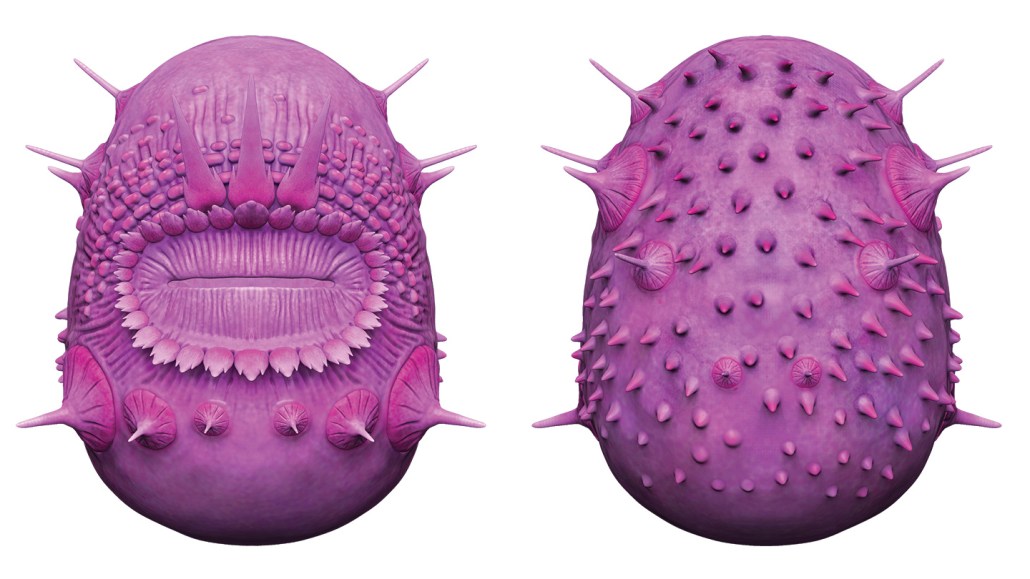This bizarre ancient critter has been kicked out of a group that includes humans
New imaging that revealed its spiny minion-like look led to its reclassification

Fossil imaging used to create this 3-D reconstruction of the extinct, roughly half-millimeter-long Saccorhytus coronarius — seen from its front (left) and back (right) — helped lead to the reclassification of the critter.
Y. Liu et al/Nature 2022







